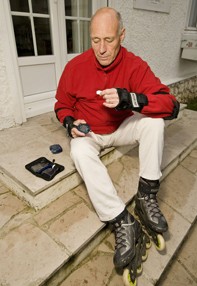Hypoglycaemia: a major barrier to glycaemic control
Fear of hypoglycaemia and a need for the reassurance of ‘safe’ and high glucose levels often form a major barrier to patients with diabetes achieving glycaemic control. Hypoglycaemia is feared because its unpleasant symptoms, sense of loss of control and risk of serious associated problems disrupt patients’ lives. Patients may need to remain constantly aware of the risk of hypoglycaemia, monitor blood glucose levels (BGLs) and consume extra carbohydrate frequently. They may be embarrassed by their symptoms, or by their need for help from another person. The threat, demands, loss of self-esteem and increased dependency may be associated with the further burdens of anxiety, depression and social isolation.
This article reviews the physiology of hypoglycaemia, the different patterns in type 1 and type 2 diabetes, the common causes and treatment of hypoglycaemia and the six ‘red flags’ that identify patients at high risk of severe hypoglycaemia.

